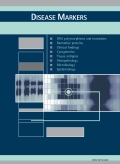Authors: Chen, Jin | Kam-Tao, Philip | Kwan, Bonnie Ching-Ha | Chow, Kai-Ming | Lai, Ka-Bik | Luk, Cathy Choi-Wan | Szeto, Cheuk-Chun
Article Type:
Research Article
Abstract:
Background: The role of microRNAs (miRNAs) in peritoneal transport is uncertain. Methods: We studied 82 new peritoneal dialysis (PD) patients, 22 prevalent patients without ultrafiltration problem, and 6 patients with documented ultrafiltration problem. Peritoneal transport was determined by standard peritoneal equilibration test (PET). RNA was extracted from the PD effluent after PET, and intra-peritoneal expression of miRNA targets were quantified. Results: There were significant difference in the PDE expressions of
…miR-15a and miR-21. There were modest inverse correlations between ultrafiltration volume and PDE expression of miR-17 (r= −0.198, p =0.041) and miR-377 (r=−0.201, p=0.041). There was an inverse correlations between dialysate-to-plasma creatinine concentration at 4 hours and PDE expression of miR-192 (r=−0.199, p=0.040); while mass transfer area coefficient of creatinine correlated with PDE expression of miR-192 (r=−0.191, p=0.049) and miR-377 (r=0.201, p=0.041). Amongst 7 randomly selected patients who had repeat PET after one year, there was a significant correlation between baseline PDE expression of miR-377 and change in ultrafiltration volume (r=−0.852, p=0.015). Conclusion: The miRNA expression in PDE, including miR-15a, miR-17, miR-21, miR-30, miR-192, and miR-377, correlated with peritoneal transport characteristics. Our result suggests that miRNA may play a role in the regulation of peritoneal membrane function.
Show more
Keywords: Gene expression, chronic renal failure, peritoneal equilibration test
DOI: 10.3233/DMA-2012-0901
Citation: Disease Markers,
vol. 33, no. 1, pp. 35-42, 2012
Price: EUR 27.50





